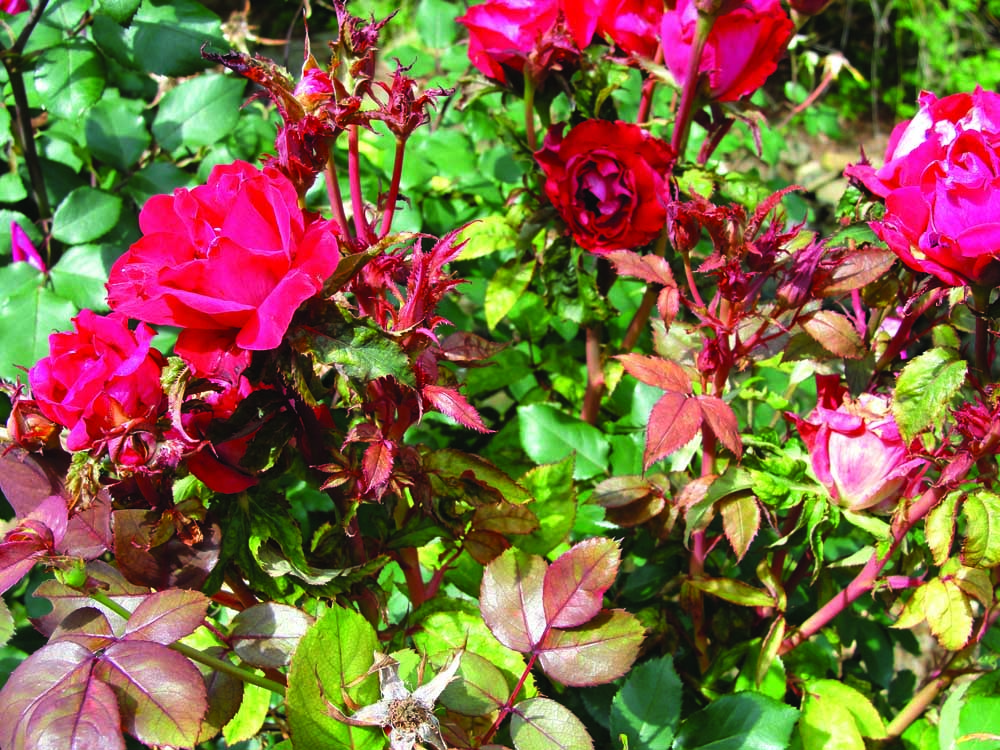Signs of rose rosette disease are deformed growth, red-orange coloration
Published 11:43 am Wednesday, May 6, 2020

- This rose bush is infected with rose rosette virus.
Most of you have already heard about “rose rosette, a serious rose disease we all have to be on the lookout for. It’s a huge issue in the Dallas area. We don’t want it to become so in East Texas or the Rose City so it’s very important that you learn about it.
The symptoms of this virus disease are quite distinct. The most noticeable sign is a deformed, dense clustered, “witches broom” growth habit, with an abnormal bright burgundy or red-orange coloration. The plant basically goes crazy, as if it had been sprayed with herbicide. The stems might also be flattened, enlarged, or elongated, with excessive leaf growth or thorniness. The symptoms of rose rosette might only occur on a single branch or a few shoots at first. The rose may die or may linger stunted for years, affecting other roses in the area.
Trending
Rose rosette virus is generally spread to other roses in two ways. In gardens it is spread by a tiny eriophyid mite that feeds on an infected plant then spreads it to an uninfected plant that it later feeds on. These mites are so small that they can be spread by the wind. To be on the safe side, make sure roses are spaced so that they do not touch each other. The mite itself doesn’t cause the disease. It only spreads it. The other way of spreading this disease is through plant propagation. Any rose propagated from an infected plant will have the disease as well, as the virus is flowing through its tissue.
There is no cure for rose rosette. Pruning out the noticeably infected branches won’t cure a bush and treating the plant or soil with assorted concoctions won’t cure this disease. By the time you see the symptoms, the disease is being replicated inside the plant with no way for you to rid it. All rose cultivars to date are unfortunately susceptible.
The only option is to completely remove and dispose of the entire infected plant, roots and all (in a sealed garbage bag), preferably at the first sign of infection. If you allow an infected plant to live, you unfortunately are risking the life of all your other roses along with all Tyler roses. The disease is in living plants, not the soil, so you can grow roses again in the same area.
If you suspect you have an infected rose, a sample can be sent to the Texas A&M Disease Diagnostic Laboratory. More information and submission forms can be found at http://plantclinic.tamu.edu/. There is a $55 charge for testing rose rosette samples.
Greg Grant is the Smith County horticulturist for the Texas A&M AgriLife Extension Service. He is author of Texas Fruit and Vegetable Gardening, Heirloom Gardening in the South, and The Rose Rustlers. You can follow him on Facebook at “Greg Grant Gardens,” read his “Greg’s Ramblings” blog at arborgate.com, and read his “In Greg’s Garden” in each issue of Texas Gardener magazine (texasgardener.com). More research-based lawn and gardening information from the Texas A&M AgriLife Extension Service can be found at aggieturf.tamu.edu and aggie-horticulture.tamu.edu.






